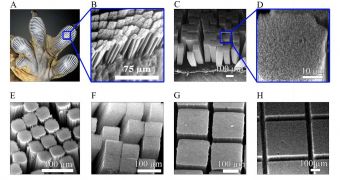Few people know that not all materials normally stick together, but many of you have had troubles sticking two surfaces together that no superglue seemed to be able to hold in place. Scientists encounter problems in their endeavor, and they usually turn to Mother Nature to solve their problems.
The Gecko is a small lizard, one among the best climbers in the animal kingdom. Their ability to walk on walls and ceilings makes them look like they've got superglue coming out of their feet. The lizard's adhesive ability inspired researchers in creating the strongest adhesive on the nanoscale.
Researchers at Rensselaer Polytechnic Institute and the University of Akron have created a synthetic "gecko tape" with four times the sticking power of the real thing. The new adhesive is made from polymer surfaces covered with nanotube hairs that mimic the thousands of tiny hairs on the gecko's foot, and nods with almost every type of surface on the nanoscale.
"Several people have tried to use carbon nanotube films and other fibrous structures as high-adhesive surfaces and to mimic gecko feet, but with limited success when it comes to realistic demonstrations of the stickiness and reversibility that one sees in gecko feet," said Pulickel Ajayan, the Henry Burlage Professor of Materials Science and Engineering at Rensselaer Institude leader of the team that created the new material.
"We have shown that the patchy structures from micropatterned nanotubes are essential for this unique engineering feat to work. The nanotubes also need to be the right kind, with the right dimensions and compliance."
"Geckos inspired us to develop a synthetic gecko tape unlike any you'll find in a hardware store," said Ali Dhinojwala, professor of polymer science at the University of Akron. "Synthetic gecko tape uses 'van der Waals interactions' - the same interactions that hold liquids and solids together - to stick to a variety of surfaces without using sticky glues."
The new glue could have many practical applications, from next-generation computer chip manufacturing to energy production, feet for wall-climbing robots and could even be used in outer space, where most adhesives don't work because of the vacuum.

 14 DAY TRIAL //
14 DAY TRIAL //